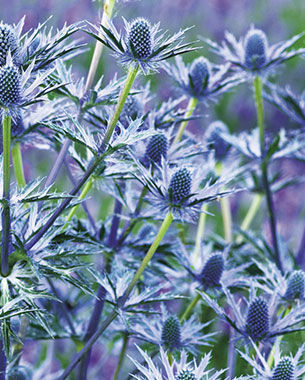
1. ‘Big Blue’ Sea Holly
Name: Eryngium × zabelii ‘Big Blue’
Usda Hardiness Zones: 4 to 9
Size: 18 to 24 inches tall and wide
Conditions: Full sun; various soil conditions from sandy to clay
‘Big Blue’ has great color and texture with distinctive violet-blue bracts, flowers, and upper stems. It makes a bold statement when massed and will hold its own as a small specimen. This spiky perennial is a wonderful cut flower, either fresh or dried. It will tolerate a wide range of growing conditions including poor and dry soil, but it has a taproot and, therefore, does not like to be transplanted once established.
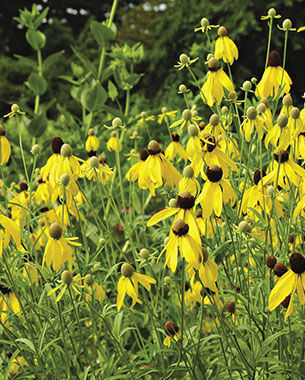
2. Pinnate Prairie Coneflower
Name: Ratibida pinnata
Zones: 3 to 8
Size: 3 to 5 feet tall and 1 to 2 feet wide
Conditions: Full sun to partial shade; loam, clay loam, or sandy soil
From May through September, this member of the aster family is lush with yellow blooms. It is a joy to see its elegantly drooping petals swaying in the wind. This plant is a favorite of pollinators, and its seeds are a good source of food for songbirds in autumn. Although it can handle a range of poor soil types, rich soil can cause this plant to lean. To prevent this, do not overfertilize, and stake any stems that get too tall. The flowers are exquisite and long-lived in cut-flower arrangements and in the garden.
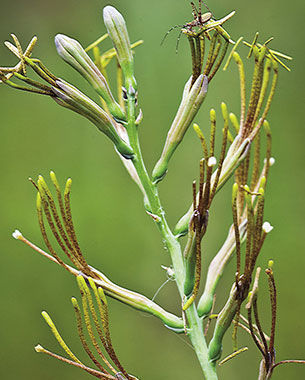
3. False Aloe
Name: Manfreda virginica
Zones: 6 to 9
Size: Basal rosette 2 to 3 feet tall and wide; flower stalk 4 to 6 feet tall
Conditions: Full sun to partial shade; alkaline and sandy, dry, shallow, or rocky soil
The striking height difference between false aloe’s foliage and its tall inflorescence make it a versatile garden gem. Its architectural stalk tipped with light yellow flowers will create an eye-catching focal point if sited toward the middle or back of a bed. Bring it toward the front, and the elegant basal rosette of leaves will lend an air of grace to your planting design. This tenacious native of the southern United States and northern Mexico needs little care, but it does not appreciate competition from other low-growing plants or ground covers.
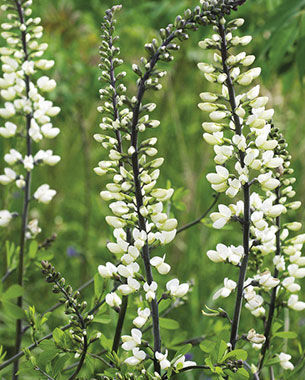
4. White Wild Indigo
Name: Baptisia alba
Zones: 5 to 9
Size: 2 to 4 feet tall and 2 to 3 feet wide
Conditions: Full sun to partial shade; well-drained, sandy, or dry clay soil
After bursting forth from its winter rest, white wild indigo sends up multiple 1-foot-long racemes of white pealike blossoms above blue-green foliage. After pollination, bulbous green seedpods emerge, and in late summer and early fall, as the plant begins to set viable seed, the pods and leaves blacken. When this happens, try stripping the leaves and leaving the seedpods attached for a conversation piece in either the garden or a vase. White wild indigo will tolerate partial shade, but too much shade will cause it to become pale and leggy.
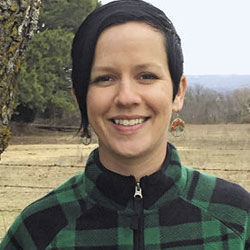
Photos, except where noted: millettephotomedia.com; Richard Bloom; Steven Foster; courtesy of Megan Lankford


















Comments
Log in or create an account to post a comment.
Sign up Log in